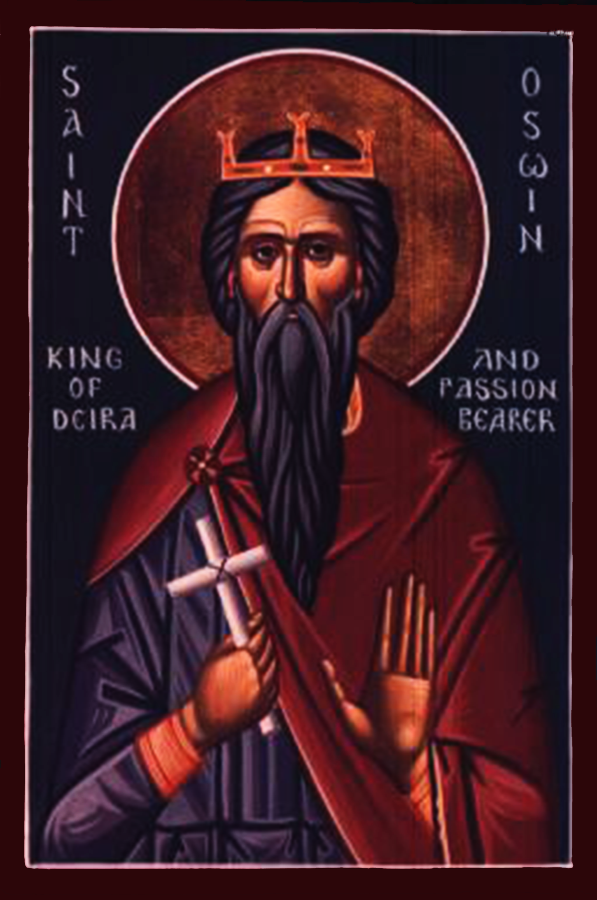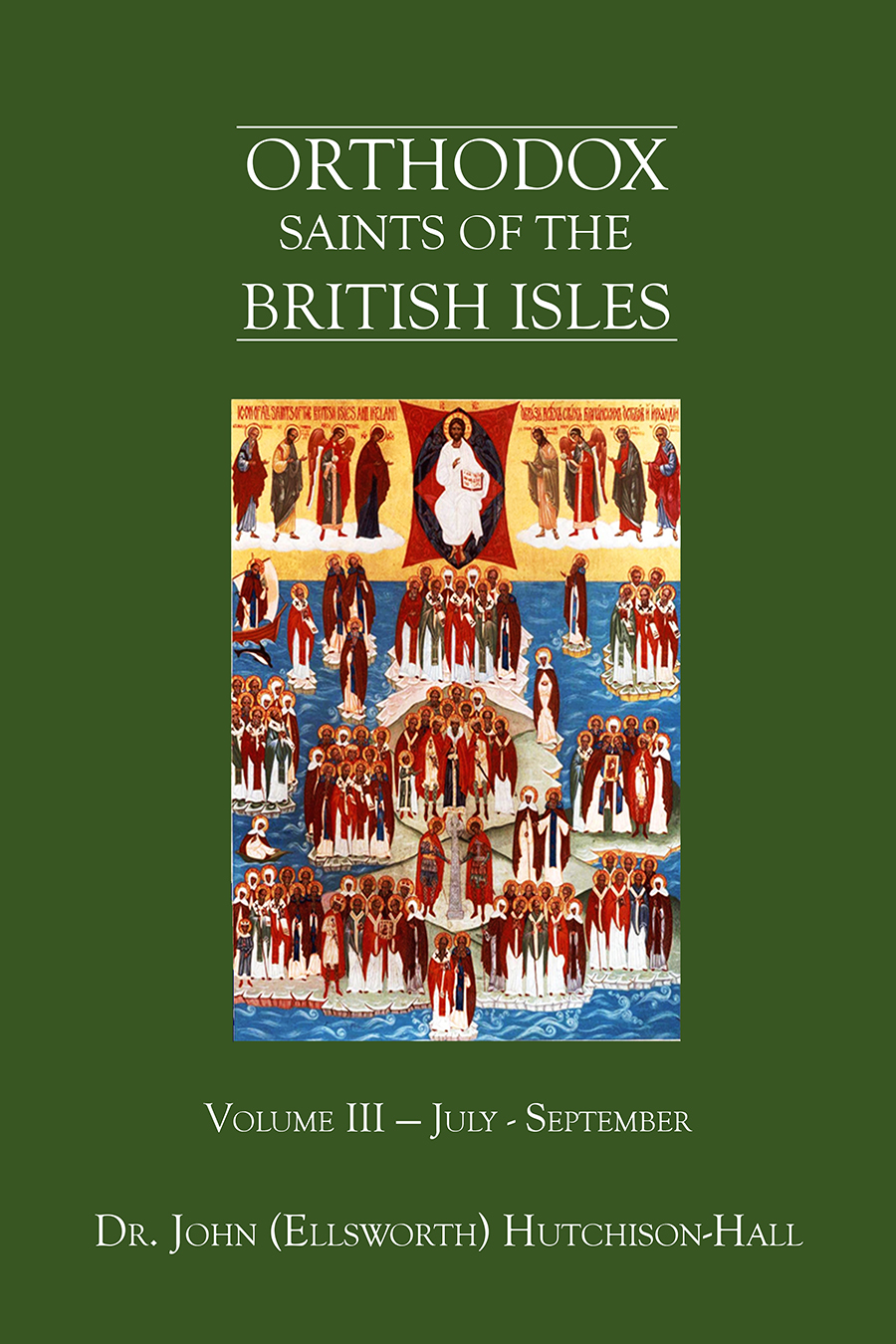
Orthodox Saints of the Pre-Schism
See of Rome
2nd September (NS) — 20th August (OS) 2023
AMATOR (AMADOUR) the HERMIT, (Date Unknown), legend states that St. Amator was the first hermit in Gaul (France). His cell, at Quercy, about 30 km / 18.5 mi south of Cahors (southern France), was a popular place of pilgrimage. In 1126 his relics were uncovered and found to be incorrupt.
BURCHARD of WORMS, a native of Hesse (Germany) who received monastic tonsure at the Abbey of St. Peter of Lobbes (abbaye Saint-Pierre de Lobbes — Hainaut, Belgium). St. Burchard was the author of a twenty volume series on Canon Law known as Decretum Burchardi. He was appointed by Otto III, Holy Roman Emperor (r. 996–1002), and confirmed by Archbishop Willigis of Mainz, to the See of Worms in 1000. St. Burchard served the See of Worms until his repose in 1025, during which time he oversaw the creation of numerous monasteries and churches.
EADBERHT (EADBERT, EDBERT) of NORTHUMBRIA, King St. Eadberht succeeded King St. Ceolwulf of Northumbria (15th January) to the throne of Northumbria in present-day north-eastern England. After twenty years of a prosperous reign, King St. Eadberht abdicated in favour of his son and retired to York, where his brother, Ecgberht, was Archbishop. King St. Eadberht entered the monastery attached to the cathedral and spent the remaining ten years of his life in prayer and penance. King St. Eadberht reposed in 768, and was buried in the porch of the cathedral, alongside his brother who had reposed two years earlier.
HADUIN (HARDUIN) of LE MANS, twelfth Bishop of Le Mans (north-western France), and founder of several monasteries including the Abbey of Our-Lady of Évron (Notre-Dame-d'Évron) in Évron (north-western France). St. Haduin reposed circa 662.
LEOVIGILD and CHRISTOPHER, two members of the group of forty-eight martyred in Córdoba in Al-Andalus (southern Spain) during the reign of Emir Abd ar-Rahman II (r. 822–852), and commonly known as the Martyrs of Córdoba. St. Leovigild was a priest-monk in Córdoba, and St. Christopher a monk at the monastery of St. Martin de La Rojana near Córdoba. They were both martyred by decapitation on 20th August, 852.
MEXME (MAXIMUS, MESME) of CHINON, in his Glory of the Confessors St. Gregory of Tours (17th November) tells of a disciple of St. Martin of Tours (11th November) by the name of Mexme, who, in the fifth century settled in a cave in Chinon (west-central France) as a hermit, and went on to found the first church there which served as the centre of a small monastery and later became Chinon Abbey. St. Mexme reposed circa 470.
OSWINE (OSWIN) of DEIRA and PASSION-BEARER, King St. Oswine was a devout Christian and a close friend of St. Aidan of Lindisfarne (31st August). Following the repose of King St. Oswald of Northumbria (5th August) in 642, Northumbria was once again divided in two with King St. Oswine ascending to the throne of Deira, and his cousin Oswiu to the throne of Bernicia. Nine years later (651), King St. Oswine was slain in battle against the forces of Oswiu at Gilling near Richmond, Yorkshire, England, and has been honoured as a martyr ever since. King St. Oswine's tomb at Gilling became a place of pilgrimage until his relics were translated to Tynemouth Priory (about 15km / 9mi east of Newcastle upon Tyne), during the Viking invasions.
Troparion of King St. Oswine of Deira — Tone I
Courtesy and humility shone from thee, O radiant Martyr Oswin.
Trained by Saint Aidan as a Christian ruler, thou didst illumine
northern Britain. Glory to Him Who has strengthened thee; glory to
Him Who has crowned thee; glory to Him Who through thee works
healings for all.
PHILIBERT of JUMIÈGES, after being educated by St. Ouen of Rouen (24th August), St. Philibert received monastic tonsure at Rebais Abbey (north-central France) and was promoted to Abbot at the tender age of twenty. Unfortunately, his lack of experience was too great to overcome and he resigned so that he could visit other monastic communities and study their Rules. In 654, he was given land by Clovis II, King of Neustria and Burgundy (r. 639–657) on which he founded the Abbey of St. Peter of Jumièges (L'abbaye Saint-Pierre de Jumièges) in Normandy. Before his repose in 684, St. Philibert founded several other monastic communities for both men and women, including an abbey at Noirmoutier (west-Central France).
The Viking raid on Noirmoutier in 799 is the first recorded Viking raid on the Continent with the raiders sacking the monastery of Saint Peter of Jumièges. The filbert nut derives its name from St. Philibert, since it ripens about 20th August in England.
PORPHYRIUS of PALESTRINA, (Date Unknown), said to have been a priest-martyr in Palestrina near Rome. However, he is most likely apocryphal as the information on his life comes from the unreliable Acta of St. Agapitus of Palestrina.
Get your copy of Orthodox Saints of the British Isles today.
Available at Amazon or your favourite e-bookstore.
AGRICOLA (AGRICOLUS) of AVIGNON, the son of St. Magnus of Avignon (19th August) the thirty-fourth Bishop of Avignon (south-eastern France). At the age of sixteen, St. Agricola received monastic tonsure at the Abbey of Our Lady of Lérins (abbaye Notre Dame de Lérins) on one of the Lérins Islands in the Mediteranian Ocean off the Côte d’Azur in France. At Lérins St. Agricola acquired a reputation for scholarship and holiness of life. At the age of thirty, he was summoned by his father to serve as his co-adjutor, and following the repose of St. Magnus in 660, St. Agricola succeeded his father as Bishop. He governed the See of Avignon for forty years, reposing in 700 of natural causes.
ANTONINUS of PAMIERS, (Date Unknown), the patron saint of Pamiers (south-western France), Palencia (northern Spain), and Medina del Campo (north-western Spain). Not only are there no reliable details of his life extant, there are reasonable doubts to his historicity and exact identity.
CASTOR of APT, a native of Nîmes (southern France) who may have been the brother of St. Leontius of Fréjus (1st December). St. Castor was a lawyer who settled in Marseilles (southern France) following his marriage, but soon he and his wife decided to separate and enter monasteries. St. Castor was the founder of Monanque Abbey (south-eastern France), said to have been the motivation for St. John Cassian (23rd July) to write De Institutis Coenobiorum, and finally served as the fourth Bishop of Apt (south-eastern France). St. Castor reposed circa 420 of natural causes, and his relics enshrined at the Cathedral of St. Anne (Cathédrale Sainte-Anne d'Apt) in Apt.
ELPIDIUS of LYONS, the successor of St. Antiochus of Lyons (15th October) as Bishop of Lyons (east-central France) from 410 until his repose in 422. Though he appears in numerous lists of primates of the See of Lyons, there are no details of his episcopacy, nor an extant Life.
HEIU (HIEU), St. Heiu received monastic tonsure from St. Áedán of Lindisfarne (31st August), and went on the serve as Abbess of Tadcaster in Yorkshire, England. She reposed circa 657 of natural causes. Some sources aver that St. Heiu and St. Bega (6th September) are one in the same saint.
JUSTUS (JUST) of LYONS, (Also 14th October), a deacon in Vienne (south-eastern France) who was consecrated 13th Bishop of Lyons (east-central France) in 350. St. Justus was one of the participants at the Council of Aquileia of 381 which dealt with Arianism. Shortly there after, St. Justus resigned his See and, with his deacon, went to Egypt where he lived as a hermit until his repose in 390. Shortly after his repose, his body was brought back to Lyons where he was buried at what came to be the Basilica of St. Just (basilique de Saint-Just).
LOLANUS, (Fifth Century), a variety of legends regarding the life of St. Lolanus have completely obscured the historical record. While some sources profess that he was a nephew of St. Servan of Culross (1st July), others claim that he was a native of Cana in Galilee who lived in Rome for seven years before travelling to Scotland where he spent the rest of his life. Still other sources maintain that he was a bishop in Scotland.
MAXIMA, a Roman slave and friend of St. Ansanus of Siena (1st December) who was martyred during the Diocletianic Persecution (303–313).
NONNOSUS, very little is known of the life of St. Nonnosus, who does not seem to be listed in any of the ancient martyrologies, however, he is mentioned by St. Gregory the Dialogist (3rd September) in some of his writings on Italian saints. From this we learn that St. Nonnosus was a contemporary of St. Benedict of Nursia (11th July), and a prior at the Monastery of St. Sylvester (Monastero San Silvestre) on Monte Soratte north of Rome, then later a monk at Suppentonia, near Civita Castellana (east-central Italy). St. Nonnosus reposed circa 575.
VALENTINUS (VALENTINE) of STRASBOURG, (Fourth Century), the fourth Bishop of Strasbourg (north-eastern France), of whom nothing further seems to be known.
Prior to the Schism the Patriarchate of Rome was Orthodox, and fully in communion with the Orthodox Church. As Saint John of Shanghai and San Francisco +1966 said “The West was Orthodox for a thousand years, and her venerable Liturgy is far older than any of her heresies”.
Details of British Saints excerpted from Orthodox Saints of the British Isles.
Details of continental saints from these sources.
In many cases there are several spelling versions of the names of saints from the British Isles. I use the Oxford Dictionary of National Biography version as the primary version with the more prevalent version in parenthesis e.g. Ceadda (Chad) of Lichfield.


